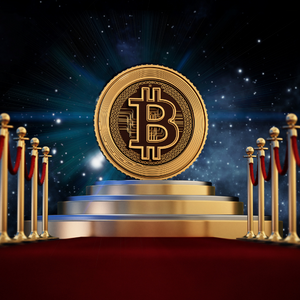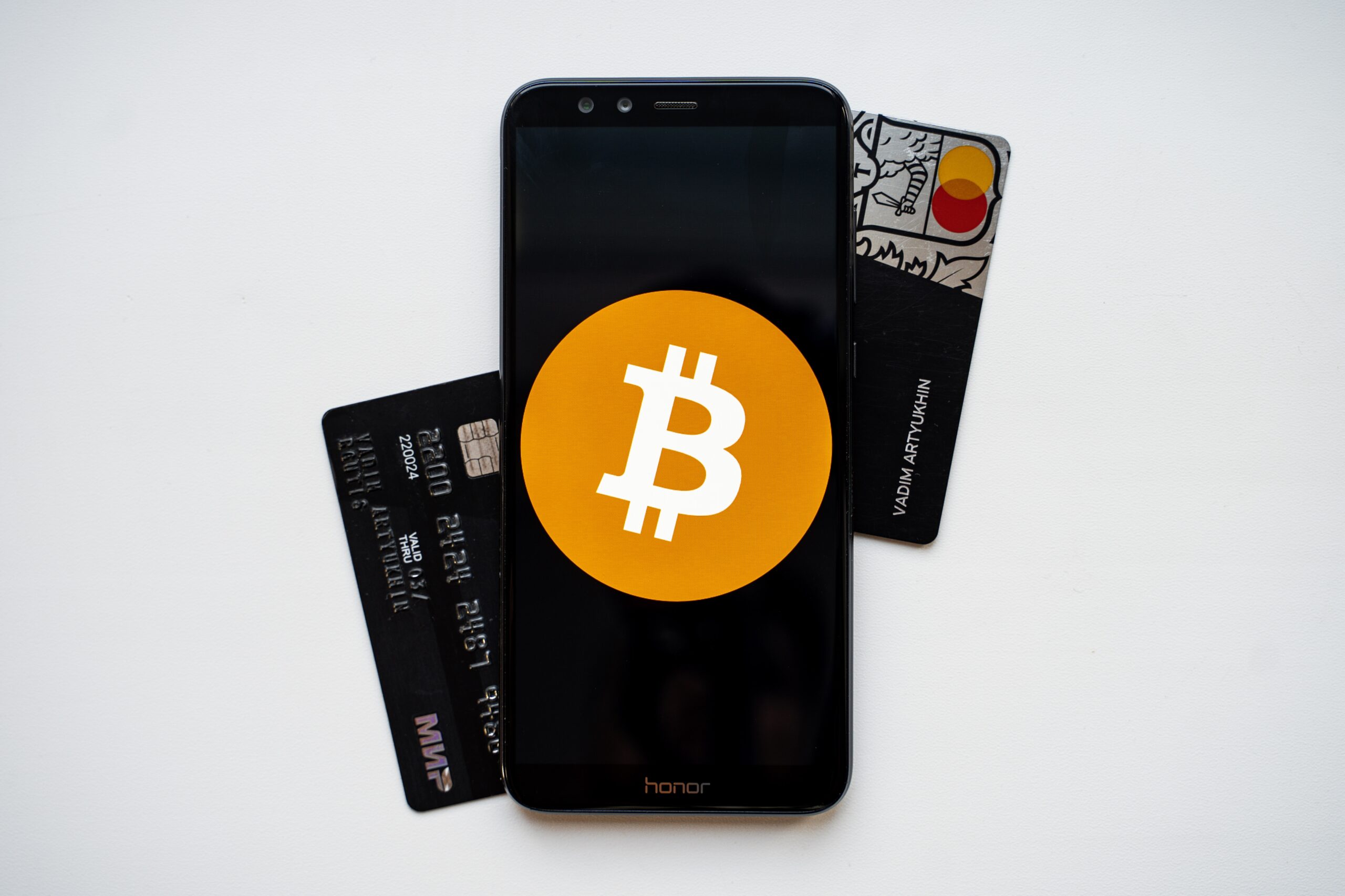
In this week’s edition of “DeFi faces stress test, DoJ fears run on Binance, Hong Kong’s crypto trading: Hodler’s Digest, July 30 – Aug. 5,” Cointelegraph brings you the latest news and updates from the world of fintech, blockchain, and Bitcoin. From the recent imprisonment of SBF to the delayed Bitcoin ETF and the SEC’s appeal in the Ripple case, this digest covers a wide range of significant events. Additionally, readers can expect comprehensive price analysis of popular cryptocurrencies such as BTC, ETH, BNB, and XRP, as well as updates on NFT news, launches of new networks, and developments in the DeFi ecosystem. Stay informed about the latest trends and regulatory changes in the crypto market with Hodler’s Digest.
Bhttp://aibitcoinira.com/wp-content/uploads/2023/08/bitcoin-ira-2-scaled.jpg
DeFi faces stress test
The decentralized finance (DeFi) sector has been gaining tremendous attention and popularity in recent years. With the rise of blockchain technology and the development of smart contracts, DeFi platforms have emerged as viable alternatives to traditional financial institutions. However, the sector is currently facing a stress test as it grapples with various challenges and vulnerabilities.
One notable incident that has cast a shadow on the DeFi ecosystem is the recent exploit in Curve Finance. Curve Finance is a popular decentralized exchange protocol that specializes in stablecoin trading. The exploit involved a vulnerability in the smart contract code, which allowed an attacker to manipulate the price of a token and drain funds from the platform.
The incident has exposed the risk inherent in DeFi platforms, as even well-established protocols such as Curve Finance are not immune to vulnerabilities. It highlights the need for rigorous security audits and continuous monitoring of smart contracts to ensure the integrity and safety of user funds.
CRV exposure risk
Another risk that DeFi investors should be aware of is the exposure to specific assets. In the case of Curve Finance, users who hold the native token CRV are particularly vulnerable to market fluctuations. The value of CRV is directly tied to the performance of the platform, and any negative events or exploits can have a significant impact on its price.
Investors should carefully assess the risk of exposure to specific tokens when participating in DeFi platforms. Diversification of assets is a key strategy to mitigate risk and protect against potential losses.
DoJ fears run on Binance
The Department of Justice (DoJ) has expressed concerns about the potential for a run on Binance, one of the largest cryptocurrency exchanges in the world. A run refers to a situation where a large number of users simultaneously try to withdraw their funds from an exchange, causing liquidity issues and potential insolvency.
The DoJ’s concerns stem from the recent crackdown on cryptocurrency exchanges by regulatory authorities around the world. Binance has been the subject of increased regulatory scrutiny, with some jurisdictions accusing the exchange of operating without proper licenses or violating anti-money laundering regulations.
While Binance has denied any wrongdoing and has taken steps to comply with regulations, the DoJ’s fears reflect the broader challenges faced by cryptocurrency exchanges in the current regulatory landscape. Investors should exercise caution when dealing with exchanges and ensure that their funds are stored in secure wallets under their control.
Hong Kong’s crypto trading
The crypto trading scene in Hong Kong has been in a state of flux due to regulatory uncertainty and the tightening of government controls. Hong Kong, long considered a global financial hub, has traditionally been a favorable jurisdiction for cryptocurrency-related activities. However, recent developments have raised concerns among traders and investors.
The Hong Kong government has proposed a ban on retail cryptocurrency trading, citing concerns over investor protection and money laundering. If implemented, this ban could significantly impact the crypto trading industry in the region and force traders to seek alternative jurisdictions.
Additionally, Hong Kong’s Securities and Futures Commission (SFC) has been ramping up its efforts to regulate the crypto sector. The SFC has issued warnings to several cryptocurrency exchanges, cautioning them against operating without proper licenses or breaching regulatory requirements.
These developments highlight the need for clarity and regulatory certainty in the crypto trading space. Traders and investors should closely monitor the situation in Hong Kong and ensure compliance with applicable regulations.
SBF ordered to jail
Sam Bankman-Fried, the founder of crypto exchange FTX, has been ordered to jail by a court in the United States. The order comes as a result of a lawsuit filed against Bankman-Fried by a former business partner, who alleges that Bankman-Fried breached their agreement and engaged in fraudulent activities.
The case has garnered significant attention in the crypto community, as Bankman-Fried is considered one of the most prominent figures in the industry. FTX is known for its innovative products and has gained a reputation for being a leading exchange in the market.
The court’s decision to order Bankman-Fried to jail sends a strong message that fraudulent activities will not be tolerated in the crypto industry. It serves as a reminder to investors to conduct thorough due diligence when dealing with cryptocurrency exchanges and other platforms.
Bitcoin ETF delayed
The long-anticipated launch of a Bitcoin exchange-traded fund (ETF) has been delayed once again. The U.S. Securities and Exchange Commission (SEC) has postponed its decision on several Bitcoin ETF applications, citing the need for additional time to review the proposals.
An ETF is a financial instrument that tracks the price of an underlying asset, in this case, Bitcoin. The launch of a Bitcoin ETF is highly anticipated as it would provide mainstream investors with an easy and regulated way to gain exposure to the cryptocurrency market.
However, the SEC has expressed concerns regarding market manipulation, lack of surveillance, and custody issues in the Bitcoin market. These concerns have led to repeated delays in approving Bitcoin ETF applications.
While the delay is disappointing for Bitcoin enthusiasts, it underscores the importance of regulatory oversight in ensuring investor protection. Investors should exercise caution when considering alternative ways to invest in Bitcoin and other cryptocurrencies.
SEC appealing Ripple case
In a significant development for the crypto industry, the U.S. Securities and Exchange Commission (SEC) has announced its intention to appeal the court’s decision in the case against Ripple Labs. The SEC had accused Ripple Labs of conducting an unregistered securities offering through the sale of XRP tokens.
The court’s ruling in favor of Ripple Labs dealt a blow to the SEC’s regulatory oversight and raised questions about the classification of cryptocurrencies. The SEC’s decision to appeal the ruling demonstrates its commitment to pursuing enforcement actions against companies that fail to comply with securities laws.
The outcome of the appeal will have far-reaching implications for the crypto industry, as it could provide further clarity on the regulatory framework governing cryptocurrencies. Investors should closely monitor the progress of the case and seek legal advice to ensure compliance with applicable securities laws.
Price analysis
BTC
Bitcoin, the world’s largest cryptocurrency, has experienced significant price volatility in recent months. After reaching an all-time high of over $64,000 in April, the price of Bitcoin has been on a rollercoaster ride, with sharp corrections and periods of consolidation.
The current price of Bitcoin hovers around $46,000, reflecting a downward trend in the market. Several factors have contributed to the decline, including regulatory uncertainties, concerns over energy consumption, and overall market sentiment.
Investors should closely monitor the price of Bitcoin and consider market trends and fundamental factors before entering or exiting positions.
ETH
Ethereum, the second-largest cryptocurrency by market capitalization, has also witnessed significant price movements in recent months. Ethereum’s price reached an all-time high of over $4,000 in May before experiencing a sharp correction.
Currently, Ethereum’s price stands around $3,400, reflecting a period of consolidation in the market. The price of Ethereum is closely tied to the development and adoption of decentralized applications (dApps) and the growth of the DeFi ecosystem.
Investors should keep a close eye on Ethereum’s price and monitor developments in the DeFi sector to assess potential investment opportunities.
BNB
Binance Coin (BNB), the native token of the Binance cryptocurrency exchange, has been one of the best-performing cryptocurrencies in recent months. BNB’s price surged to an all-time high of over $690 in May, driven by the growing popularity of the Binance ecosystem and the launch of various innovative products.
However, BNB’s price has experienced a significant correction, currently trading around $300. The price of BNB is closely tied to the performance of the Binance exchange and the success of its ecosystem.
Investors should closely monitor BNB’s price and assess the long-term growth prospects of the Binance ecosystem.
XRP
XRP, the native token of the Ripple network, has been the subject of intense regulatory scrutiny and legal battles. The price of XRP skyrocketed to over $1 during the crypto bull run earlier this year but faced a significant decline as the SEC filed a lawsuit against Ripple Labs.
Currently, XRP’s price stands around $0.70, reflecting ongoing legal uncertainties and investor sentiment. The outcome of the SEC’s appeal in the Ripple case will have a significant impact on XRP’s price and market dynamics.
Investors should exercise caution when considering investments in XRP and closely monitor regulatory developments.
DOGE
Dogecoin (DOGE), the meme-inspired cryptocurrency, has captured the attention of the crypto community with its meteoric rise in popularity. The price of DOGE reached an all-time high of over $0.70 in May, primarily driven by social media hype and celebrity endorsements.
However, DOGE’s price has experienced significant volatility, currently trading around $0.25. The price of DOGE is highly influenced by market sentiment and speculative trading.
Investors should approach DOGE with caution and carefully assess the underlying fundamentals before considering an investment.
ADA
Cardano (ADA), a blockchain platform known for its focus on security and sustainability, has gained significant attention in recent months. ADA’s price reached an all-time high of over $2.40 in May, driven by increased adoption and the release of several software updates.
Currently, ADA’s price stands around $2, reflecting a period of consolidation in the market. The future growth of ADA is closely tied to the successful implementation of its roadmap and the adoption of its smart contract functionality.
Investors should closely monitor ADA’s price and assess the progress of its development to gauge potential investment opportunities.
SOL
Solana (SOL), a high-performance blockchain platform, has emerged as one of the top contenders in the competitive landscape of layer-one solutions. SOL’s price reached an all-time high of over $200 in May, driven by increased demand for decentralized applications built on the Solana network.
Currently, SOL’s price stands around $150, reflecting a period of consolidation in the market. The success of SOL hinges on the growth of its ecosystem and the adoption of its scalable infrastructure.
Investors should closely monitor SOL’s price and assess the progress of its ecosystem to identify potential investment opportunities.
MATIC
Polygon (MATIC), a layer-two scaling solution for Ethereum, has gained significant traction in the DeFi space. MATIC’s price reached an all-time high of over $2.60 in May, driven by increased usage and the launch of innovative projects on the Polygon network.
Currently, MATIC’s price stands around $1.20, reflecting a consolidation phase in the market. The growth of MATIC is closely tied to the adoption of layer-two solutions and the scalability challenges faced by Ethereum.
Investors should closely monitor MATIC’s price and assess the progress of layer-two adoption to identify potential investment opportunities.
LTC
Litecoin (LTC), often referred to as “digital silver,” has been a mainstay in the crypto market since its inception. LTC’s price reached an all-time high of over $400 in May, benefiting from the overall market rally and its status as one of the oldest cryptocurrencies.
Currently, LTC’s price stands around $180, reflecting a period of consolidation in the market. The future growth of LTC depends on its ability to differentiate itself from other cryptocurrencies and attract mainstream adoption.
Investors should closely monitor LTC’s price and assess its long-term fundamentals to evaluate potential investment opportunities.
DOT
Polkadot (DOT), a multi-chain interoperability platform, has gained significant attention due to its innovative approach to blockchain technology. DOT’s price reached an all-time high of over $50 in May, driven by increased interest in its scalable and secure infrastructure.
Currently, DOT’s price stands around $25, reflecting a period of consolidation in the market. The success of Polkadot hinges on its ability to attract developers and projects to its ecosystem and establish itself as a leading interoperability solution.
Investors should closely monitor DOT’s price and assess the progress of its ecosystem to identify potential investment opportunities.
Daily trends and events
The crypto market is known for its volatility and rapid pace of development. Daily trends and events shape the market landscape and influence investor sentiment. Traders and investors should stay informed about the latest news and developments to make informed decisions.
Daily trends and events can range from regulatory announcements and policy changes to significant partnerships and product launches. They can also include market-wide corrections or rallies driven by external factors such as macroeconomic indicators or geopolitical events.
Staying updated with the latest trends and events can help traders and investors identify potential trading opportunities or adjust their investment strategies accordingly.
NFT news
Non-fungible tokens (NFTs) have gained significant traction as a new form of digital asset. NFTs represent unique digital items, such as artwork, collectibles, or virtual real estate, that can be bought, sold, and traded on blockchain platforms.
Two notable developments in the NFT space are Grails’ famous NFT artists and the migration of y00ts to the Ethereum network.
Grails, a platform dedicated to showcasing high-value NFTs, has onboarded some of the most famous digital artists in the world. These artists have established themselves as pioneers in the NFT space, creating unique and highly sought-after digital artworks.
The migration of y00ts, a popular NFT collection, to the Ethereum network is another significant development. The move aims to leverage Ethereum’s robust infrastructure and community support to enhance the accessibility and liquidity of y00ts.
These developments highlight the growing mainstream adoption and recognition of NFTs as a legitimate asset class. Investors should carefully consider the potential risks and rewards associated with NFT investments and conduct thorough research before participating in the market.
Recent developments in crypto regulation
Regulatory oversight has become a key focus in the cryptocurrency industry as governments and regulatory authorities seek to establish guidelines and protect investors. Recent developments in crypto regulation have had a significant impact on the industry and shaped market dynamics.
One notable development is the launch of the Base network, a decentralized asset management system for the Arbitrum and Optimism scaling solutions. The Base network aims to provide users with a secure and efficient way to manage their assets on layer-two solutions, addressing concerns related to custody and security.
Circle, the issuer of the USDC stablecoin, has launched the beta version of its multi-party computation (MPC) wallet. The MPC wallet aims to enhance the security and privacy of users’ digital assets by leveraging cryptographic techniques.
In addition, PayPal’s announcement of its intention to launch a stablecoin has garnered significant attention. PayPal’s entry into the stablecoin market reflects the growing mainstream acceptance and adoption of cryptocurrencies.
These developments underscore the importance of regulatory compliance and innovation in the crypto industry. Traders and investors should closely monitor regulatory updates and ensure compliance with applicable laws and regulations to mitigate risk and secure their investments.


